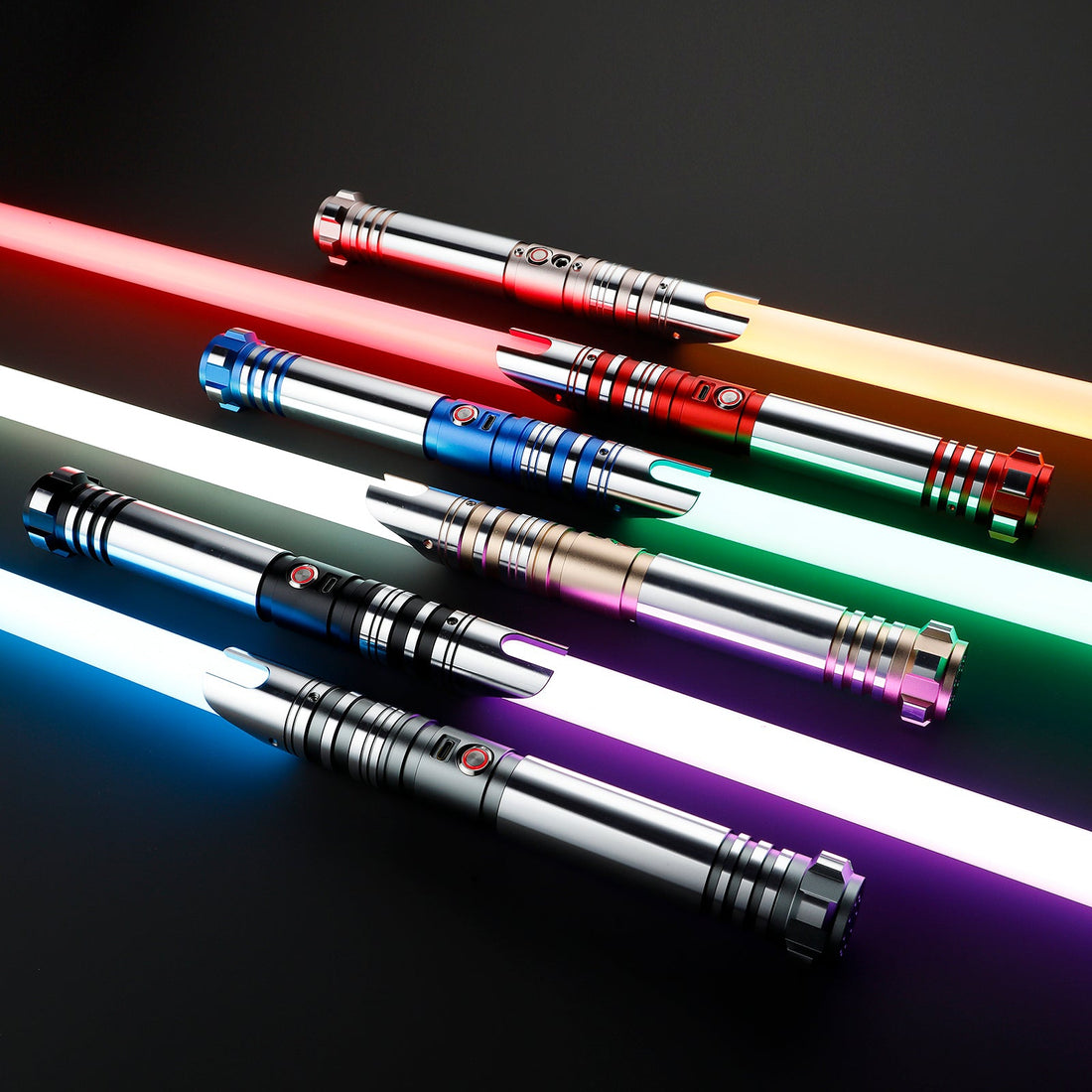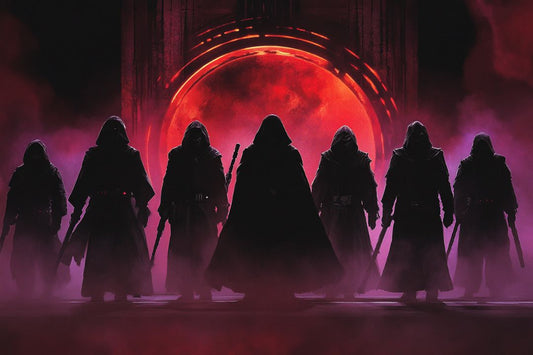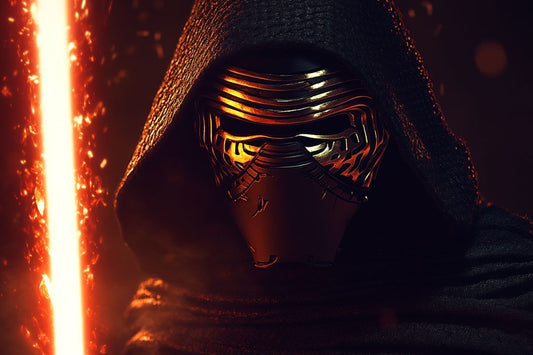Lightsabers, the iconic weapons of both the Jedi and Sith, have been fascinating Star Wars fans for generations. These elegant weapons, beyond their mesmerizing glow, symbolize much more than just battle. Each lightsaber color meaning is imbued with significance, reflecting the traits and journeys of their wielders. In this blog, we'll delve into the vibrant spectrum of lightsaber colors seen across the Star Wars films, games, and TV series. We’ll uncover the meaning behind each hue, spotlight key characters associated with them, and reveal some intriguing facts about their appearances in the Star Wars universe.
So let's not wait! Time to break down all the possible lightsaber color meanings!
Blue Lightsaber:
The blue lightsaber is one of the most iconic and widely recognized colors in the Star Wars saga. Representing the Jedi Guardian archetype, it stands for bravery, justice, and the protection of the Jedi Order. Legendary characters like Obi-Wan Kenobi and Anakin Skywalker are among the most famous wielders of blue lightsabers.
Initially, George Lucas intended all Jedi to have blue lightsabers, while all Sith would wield red ones. This color coding was meant to visually represent the dichotomy between the two factions and the contrasting paths their characters would follow.
The first appearance of a blue lightsaber dates back to the original Star Wars film, later titled Star Wars: Episode IV - A New Hope, which premiered in 1977. It was wielded by Obi-Wan Kenobi, Luke Skywalker’s mentor, during his fateful duel with Darth Vader.
Fun fact: The vibrant blue of the original lightsaber was achieved through a special effect called rotoscoping, where animators meticulously traced over the lightsaber prop frame by frame to create its iconic glow.

Green Lightsaber:
The green lightsaber is often associated with harmony, wisdom, and a deep connection to the Force, making it a frequent choice for Jedi Consulars and wise Jedi Masters. Esteemed characters like Yoda, Qui-Gon Jinn, and Luke Skywalker wield green lightsabers, embodying the balance and serenity this color signifies.
The green lightsaber first appeared in Star Wars: Episode VI - Return of the Jedi, released in 1983. Luke Skywalker constructed his new green-bladed lightsaber after losing his original blue one in his confrontation with Darth Vader in The Empire Strikes Back.
Fun fact: In Star Wars: The Clone Wars animated series, Anakin Skywalker temporarily wields a green lightsaber in some episodes as a tribute to his fallen Padawan, Ahsoka Tano, who also used green lightsabers.

Red Lightsaber:
The red lightsaber, a symbol of the Sith and the dark side of the Force, embodies power, aggression, and malevolence. It is most famously wielded by Sith Lords like Darth Vader and Darth Maul. Unlike the Jedi, who use natural Kyber crystals, the Sith forge synthetic crystals that produce the sinister red hue of their lightsabers.
The red lightsaber made its debut in the original Star Wars film, now known as Star Wars: Episode IV - A New Hope, with Darth Vader brandishing his menacing red blade. This set the tone for the red lightsaber's enduring association with the dark side throughout the Star Wars saga.
Fun fact: In the original film, the lightsaber blades were initially white, but during post-production, they were changed to red to create a stark visual distinction between the Jedi and the Sith.

Purple Lightsaber:
The purple lightsaber is a rare and unique color in the Star Wars universe, symbolizing power, authority, and a balance between light and dark. Mace Windu, played by Samuel L. Jackson, is the most notable wielder of a purple lightsaber. Jackson specifically requested a distinctive lightsaber color to make his character stand out, and George Lucas obliged, resulting in the creation of this striking weapon.
The purple lightsaber was first seen in Star Wars: Episode II - Attack of the Clones, released in 2002.
Fun fact: Mace Windu's purple lightsaber marked the first time a lightsaber of a different color—other than blue or green—was introduced in the Star Wars films.
![]()
Yellow Lightsaber:
Yellow lightsabers are often associated with characters undergoing significant transformation or assuming unique roles. They symbolize energy, warmth, and optimism. In The Rise of Skywalker, Rey, formerly known as a Jedi apprentice, adopts the name Rey Skywalker, and her lightsaber changes from blue to yellow, representing her new identity. Additionally, Jedi Temple Guards wield yellow lightsabers to signify their special duties and to maintain anonymity while protecting the Jedi Order.
Fun fact: Ahsoka Tano, during her time in Star Wars Rebels, wields two white lightsabers instead of her previous green ones, reflecting her decision to part ways with the Jedi Order while still aligning with the Light Side of the Force.
![]()
Orange Lightsabers:
Orange lightsabers are an uncommon sight in the Star Wars universe, yet their distinctive color signifies individuals who act with restraint and prefer diplomacy over combat. While details about orange lightsabers in the official canon remain sparse, they feature prominently in the game Star Wars Jedi: Fallen Order. The theory behind orange lightsabers suggests they represent a balance of peace and the Force. Yaddle, the female member of Yoda’s species, is one of the few known characters to wield an orange lightsaber, adding to the mystery surrounding this color.
Fun Fact: The inclusion of orange lightsabers in Star Wars Jedi: Fallen Order was a deliberate choice by the game developers to introduce a fresh and distinctive lightsaber color to the gaming world of Star Wars.
![]()
White Lightsabers:
White lightsabers are highly symbolic in the Star Wars universe, representing neutrality and independence. Ahsoka Tano, the former Jedi Padawan of Anakin Skywalker, is the most notable character to wield dual white lightsabers. Her choice of color reflects her departure from the Jedi Order while maintaining her alignment with the Light Side of the Force.
The first appearance of a white lightsaber occurred in the animated series Star Wars: The Clone Wars. In the fifth season, during the episode "The Gathering," Ahsoka constructs her unique pair of white lightsabers, marking a significant step in her journey.
Fun Fact: Ahsoka Tano’s white lightsabers were designed to signify her evolution as an independent character and her break from the traditional Jedi path. The white blades were chosen to visually set her apart from the typical blue and green lightsabers.

Black Lightsabers (Darksaber):
One of the rarest and most unique lightsabers in the Star Wars universe is the black lightsaber, better known as the Darksaber. Its straight, sword-like blade and distinctive black color make it stand out. The Darksaber holds deep cultural significance for the Mandalorians and is prominently featured in The Mandalorian TV series, where it is wielded by Moff Gideon.
Fun Fact: The Darksaber first appeared in the animated TV show Star Wars: The Clone Wars. Its unconventional design and black color were specifically created to symbolize power, mystery, and aggression, emphasizing its status as an ancient and revered Mandalorian artifact.
![]()
Lightsabers, with their vivid colors, offer a glimpse into the characters and their journeys within the Star Wars universe. From the courage symbolized by the blue lightsabers of Jedi Guardians to the dark power of the Sith’s red blades, each color carries its own unique significance. Whether it's the wisdom represented by the green lightsabers of Jedi Masters or the awe-inspiring purple blade of Mace Windu, lightsaber colors add depth and meaning to the characters we cherish. The next time you imagine igniting a lightsaber, remember the rich symbolism behind its color.
May the Force be with you!



